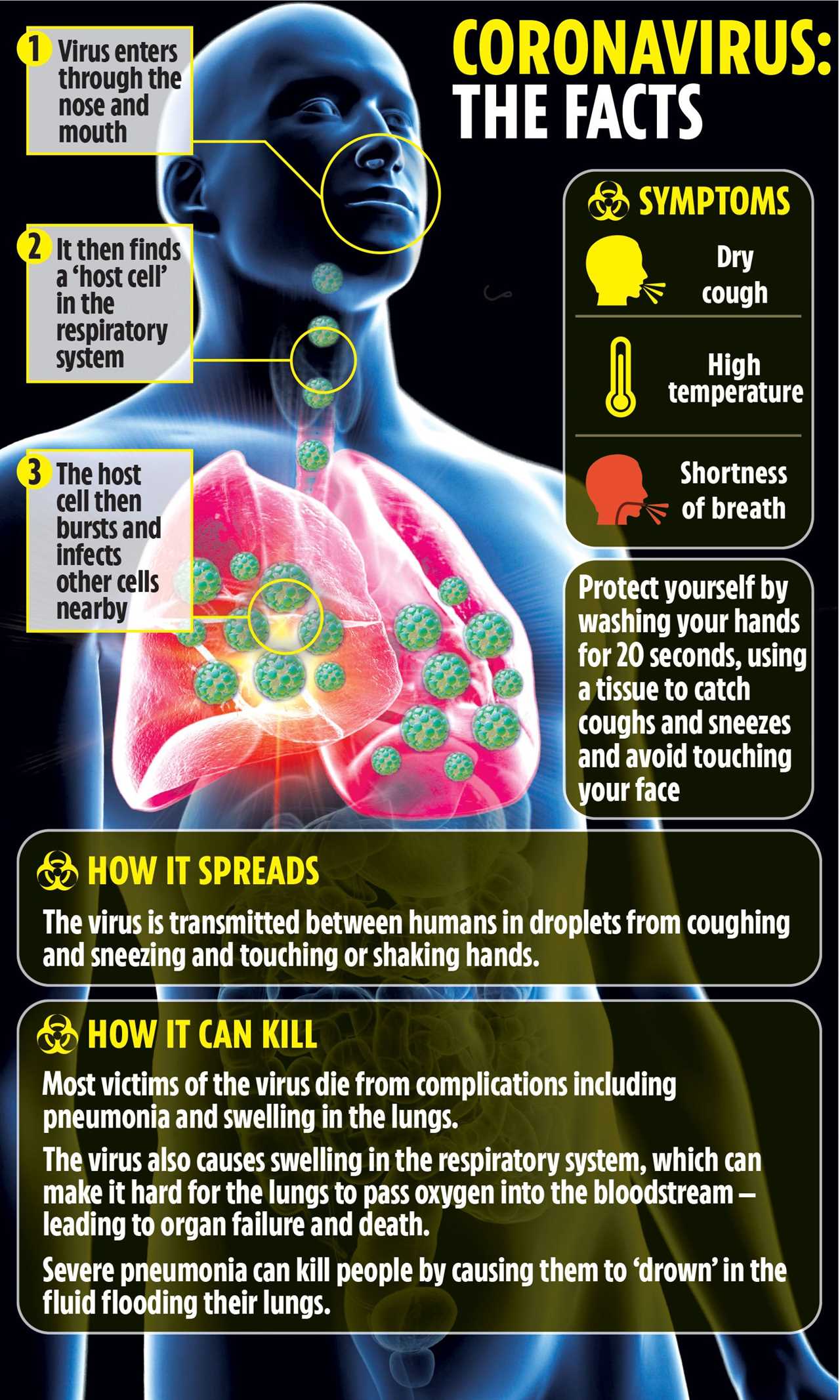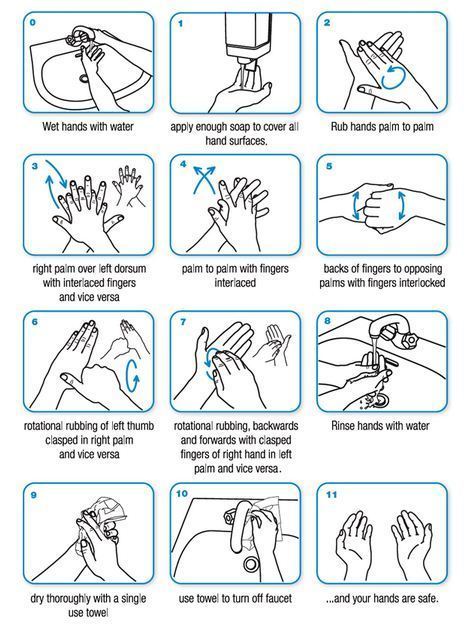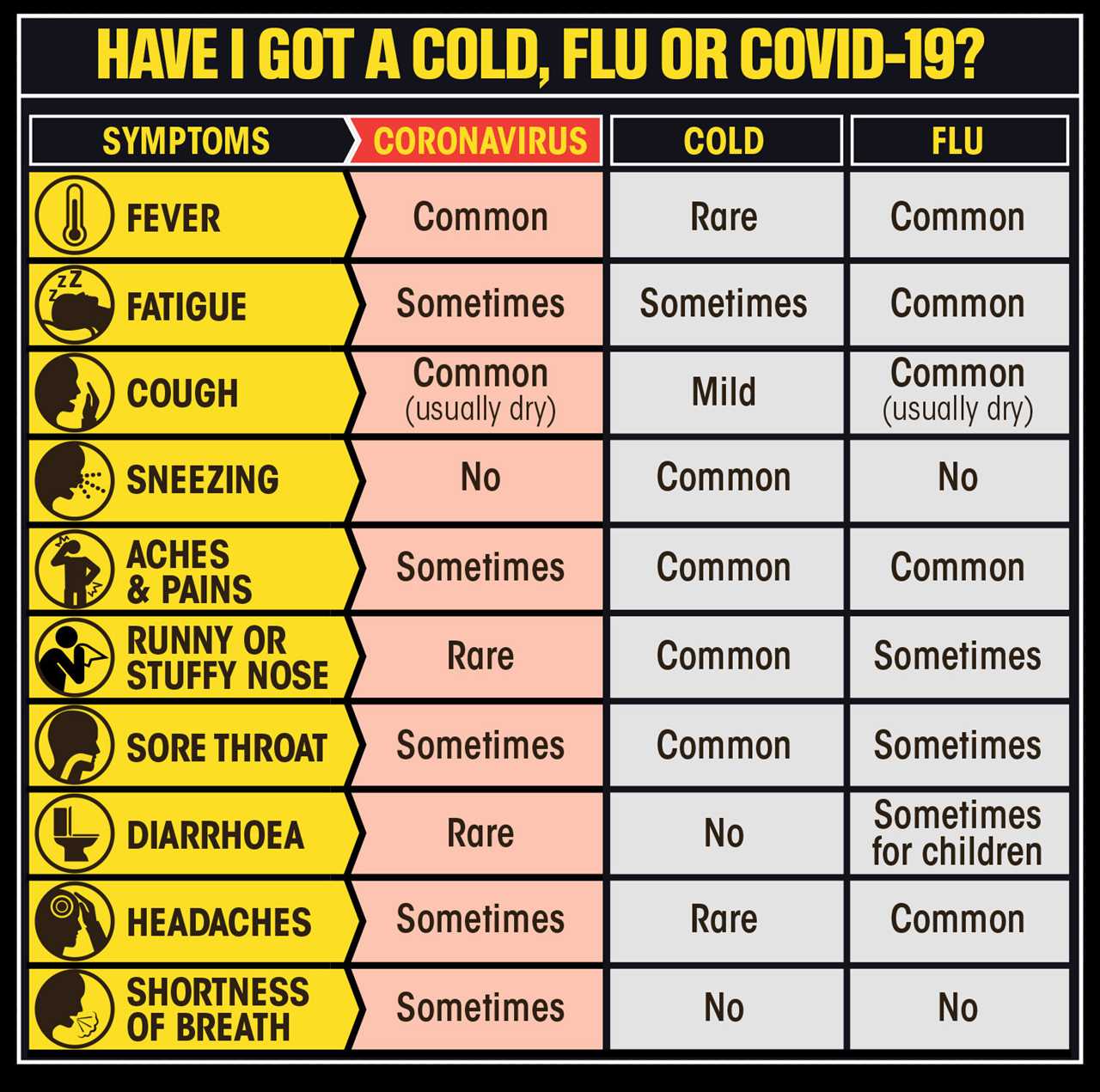A NEW and continuous cough, a high temperature and a loss of taste and smell are the key symptoms of the coronavirus.
Experts have previously warned that other symptoms, such as going to the toilet more often or a headache, may also be present, but as cases start to rise again in the UK, it’s important to know the signs.

Members of the public have been warned to look out for a dry persistent cough – one of the key symptoms of Covid-19.
If you are experiencing symptoms of the virus it’s imperative that you get a test.
You can book a test online if you are experiencing symptoms, or if someone you live with has displayed them.
The government advises to get a test done in the first five days of having symptoms.
Here, we take you through this main symptom and how to protect yourself and your family.
What is a dry persistent cough?
A dry persistent cough is a “classic” symptom of coronavirus, according to Dr Sarah Jarvis, GP and Clinical Director of Patientaccess.com.
She says a dry persistent cough is:
- New for you (or different from your normal cough if, for instance, you have a ‘smoker’s cough’)
- Persistent – not just because you’re clearing your throat or because you have something caught in your throat.
- It needs to last for at least half a day
- A dry (rather than “fruity” cough) is more likely to be due to coronavirus, but you need to self-isolate regardless of whether your cough is dry or productive.
The NHS describes a “dry cough” as a cough where no phlegm or mucus is produced, which is also irritating and usually associated with a tickly throat.
The other symptoms
As well as a dry persistent cough, health officials say the other most common symptoms of coronavirus infection usually include a high temperature and shortness of breath and a loss of taste and smell.
However, as Covid-19 is a new virus, experts are still working to understand it.
Experts at King’s College previously revealed that there are six types of the virus, where patients will experience different clusters of symptoms.
Some patients may have aches and pains, nasal congestion, runny nose, sore throat or diarrhoea – but these are usually mild and begin gradually.
Despite this, developing these symptoms does not necessarily mean you have the illness and they are similar to other illnesses, such as the common cold or flu.
Some people will not develop all of these symptoms – and some might not even show symptoms at all, experts say.
Around one out of every six who gets Covid-19 become seriously ill and develops difficulty breathing, according to the World Health Organisation (WHO).
Older people, and those with underlying medical problems like high blood pressure, heart problems or diabetes, are at most risk developing serious illness.

This can include pneumonia and swelling in the lungs, which can make it hard for the lungs to pass oxygen into the bloodstream – leading to organ failure and death.
Severe pneumonia can kill people by causing them to “drown” in the fluid flooding their lungs.
People with fever, cough and difficulty breathing should seek medical attention, the WHO says.
Research has recently found that overweight Brits are twice as likely to be killed by the virus. Experts also claimed that this could be why Brits have fared worse than other nations when it comes to the severity of the virus.
If you’re in doubt whether you have coronavirus you can visit the Patient Access’ clinically approved coronavirus checking tool here.
How quickly do coronavirus symptoms start?
Symptoms are thought to appear between two and 11 days.
New research has found that the average incubation period of Covid-19 is 5.1 days.
A study by the Johns Hopkins Bloomberg School of Public Health in the US found that almost all (97.5 per cent) of those who develop symptoms appeared to do so within 11.5 days of infection.
Kids and the virus
Experts have recently claimed that kids could display different symptoms to adults who have contracted the virus.
As children are now back at school across the UK, parents have been warned to look out for some key symptoms in kids that differ from adults.
Data from the Covid Symptom Tracker App revealed the findings from 98 children who tested positive and around 15,800 negative tests.
Of the 198 children who tested positive 55 per cent suffered from fatigue.
The second top symptom was a headache with 53 per cent suffering, fever is next with 49 per cent suffering with this, 38 per cent suffered with a sore throat and 35 per cent suffered with a loss of appetite.
It also found that 15 per cent of kids who test positive also present with an unusual skin rash.

How can you protect yourself?
The best way to prevent catching any form of coronavirus is to practice good hygiene, health experts say.
Health bosses say the best way to protect yourself and others is to wash your hands with soap and water for the time it takes to sing Happy Birthday twice.
Happy Birthday takes about 20 seconds to sing twice and is said to be the perfect number to clean your hands to thoroughly.
If soap and water are not readily available, use a hand sanitiser that contains at least 60 per cent alcohol.
Cover all surfaces of your hands and rub them together until they feel dry.
In the UK people are also required to wear face masks in various settings in order to stop the spread.
You are required to wear a face mask or covering on public transport, in shops and supermarkets and it is also advised that masks and coverings are worn in enclosed spaces where social distancing is not possible.
Brits should try and stay two metres apart and in settings such as pubs and restaurants, stay one metre apart with other precautions.

If Covid-19 is spreading in your community, take extra measures to put distance between yourself and other people – especially those who are more vulnerable – to further reduce your risk of being exposed to this new virus.
Some areas in the UK have had further restrictions placed on them due to a recent rise in cases.
Other places are also placed on government watch lists as areas that need to be monitored as cases rise.
According to a 2015 study in the American Journal of Infection Control, people touch their faces more than 20 times an hour on average.
However, you’ll need to try your best not to do this if you want to protect yourself from coronavirus.
This is because we’re constantly touching surfaces contaminated with pathogens such as doorknobs, phones and handrails.
These pathogens can be picked up by our hands and get into the body through mucous membranes on the face — eyes, nose, and mouth — that act as pathways to the throat and lungs.
Also, make sure to cover your mouth and nose with a tissue when you cough or sneeze or use the inside of your elbow.
Throw used tissues in the bin straight away.
It’s hard to know when someone is going to cough or sneeze, but if you can, try and avoid standing within two metres of them.
Droplets from a cough or sneeze can travel up to approximately 7ft (2.1m) when expelled through the air.
Clean and disinfect frequently touched surfaces daily.
This includes tables, doorknobs, light switches, counter tops, handles, desks, phones, keyboards, toilets, taps, and sinks.






